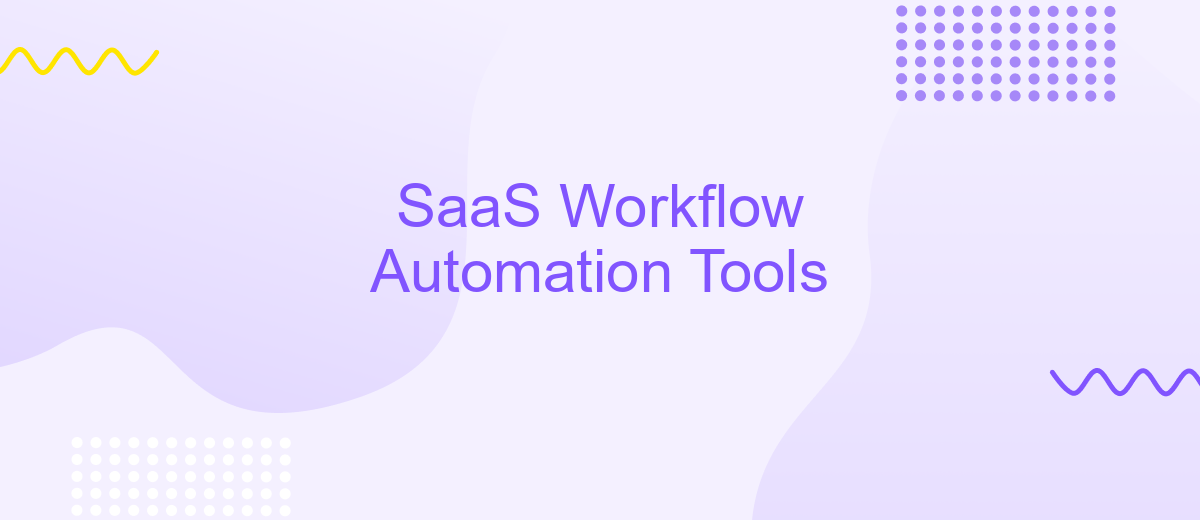SaaS Workflow Automation Tools
In today's fast-paced digital landscape, businesses are increasingly turning to SaaS workflow automation tools to streamline operations, enhance productivity, and reduce human error. These innovative solutions enable organizations to automate repetitive tasks, integrate various applications, and optimize workflows, ultimately driving efficiency and growth. Explore the benefits and key features of leading SaaS workflow automation tools in this comprehensive guide.
Introduction
In today's fast-paced business environment, efficiency is key. SaaS workflow automation tools have become essential for companies looking to streamline their operations and improve productivity. These tools not only automate repetitive tasks but also ensure that processes run smoothly and without errors.
- Automate repetitive tasks
- Improve productivity
- Ensure process accuracy
- Integrate with various services
One notable service that aids in setting up these integrations is ApiX-Drive. It allows businesses to connect different applications seamlessly, reducing the need for manual data entry and ensuring that information flows effortlessly between systems. By leveraging such tools, companies can focus more on strategic initiatives rather than getting bogged down by routine tasks.
Benefits of Using SaaS Workflow Automation Tools

SaaS workflow automation tools offer numerous benefits, including increased efficiency and productivity. By automating repetitive tasks, these tools free up valuable time for employees to focus on more strategic activities. This results in faster task completion and reduced human error, ultimately leading to higher quality outcomes. Additionally, these tools often come with analytics and reporting features that provide insights into workflow performance, enabling better decision-making and continuous improvement.
Another significant advantage is the ease of integration with other software and platforms. Services like ApiX-Drive facilitate seamless integration between various applications, making it simple to connect different tools and streamline processes. This not only enhances data consistency but also ensures that information flows smoothly across the organization. Moreover, SaaS solutions are typically cloud-based, offering scalability and remote accessibility, which is particularly beneficial for distributed teams and remote work environments.
Types of SaaS Workflow Automation Tools

SaaS workflow automation tools have revolutionized the way businesses streamline their processes, enhancing efficiency and productivity. These tools can be categorized into several types based on their functionalities and use cases.
- Task Automation Tools: These tools focus on automating repetitive tasks such as data entry, email notifications, and scheduling. Examples include Zapier and Microsoft Power Automate.
- Integration Platforms: These platforms connect different software applications, allowing seamless data transfer and process synchronization. ApiX-Drive is a notable example, offering easy-to-use integration solutions for various applications without requiring coding skills.
- Business Process Management (BPM) Tools: BPM tools help in designing, executing, monitoring, and optimizing business processes. Popular BPM tools include Kissflow and ProcessMaker.
- Robotic Process Automation (RPA) Tools: These tools use bots to automate complex workflows and tasks that typically require human intervention. UiPath and Automation Anywhere are leading RPA tools.
By leveraging these types of SaaS workflow automation tools, businesses can significantly reduce manual efforts, minimize errors, and achieve greater operational efficiency. Each type offers unique features tailored to specific needs, making it essential to choose the right tool for your business processes.
Factors to Consider When Choosing a SaaS Workflow Automation Tool

When selecting a SaaS workflow automation tool, it is crucial to evaluate several key factors to ensure it meets your business needs. Begin by assessing the tool's ease of use and user interface. A user-friendly platform can significantly reduce the learning curve for your team, enhancing productivity.
Next, consider the tool's integration capabilities. It should seamlessly connect with your existing software and applications. For instance, ApiX-Drive offers robust integration solutions that can simplify the process of connecting various services, making it easier to automate workflows across different platforms.
- Ease of use and user interface
- Integration capabilities
- Scalability
- Security and compliance
- Customer support
Finally, evaluate the tool's scalability to ensure it can grow with your business. Security and compliance are also critical, as the tool should protect your data and comply with industry standards. Additionally, consider the quality of customer support provided, as timely assistance can be invaluable.


Conclusion
SaaS Workflow Automation Tools have revolutionized the way businesses operate, offering streamlined processes and enhanced productivity. By automating repetitive tasks, these tools free up valuable time for employees to focus on more strategic activities. The integration capabilities of these platforms further extend their utility, allowing seamless data flow between various applications and systems.
One such tool, ApiX-Drive, exemplifies the power of integration in workflow automation. With its user-friendly interface and robust features, ApiX-Drive simplifies the process of connecting different services, ensuring that data is synchronized and workflows are optimized. As businesses continue to adopt these technologies, the potential for increased efficiency and innovation becomes even more significant, paving the way for a future where manual processes are a thing of the past.
FAQ
What is SaaS workflow automation?
How can I integrate different apps and tools using workflow automation?
What types of tasks can be automated with workflow automation tools?
Is it necessary to have coding skills to use workflow automation tools?
What are the benefits of using workflow automation tools for my business?
Apix-Drive is a universal tool that will quickly streamline any workflow, freeing you from routine and possible financial losses. Try ApiX-Drive in action and see how useful it is for you personally. In the meantime, when you are setting up connections between systems, think about where you are investing your free time, because now you will have much more of it.

